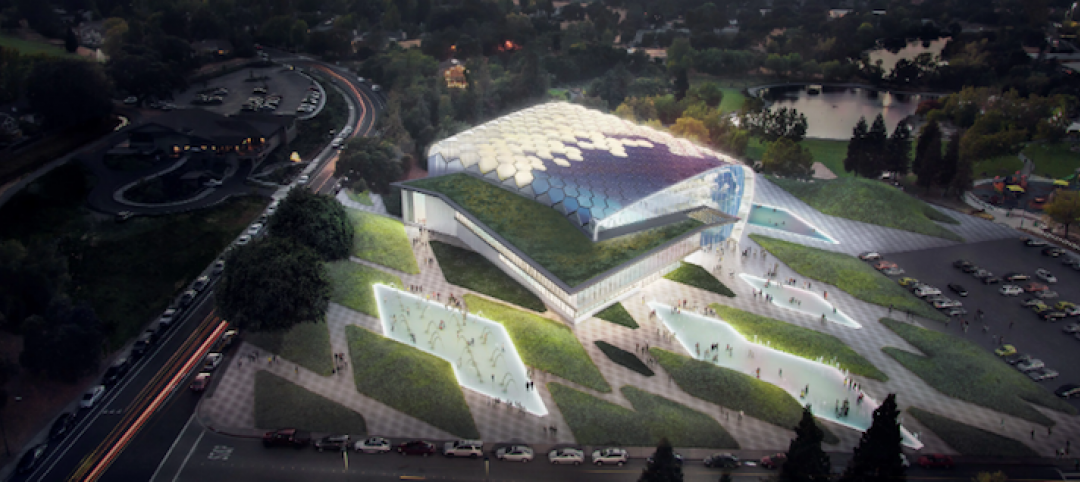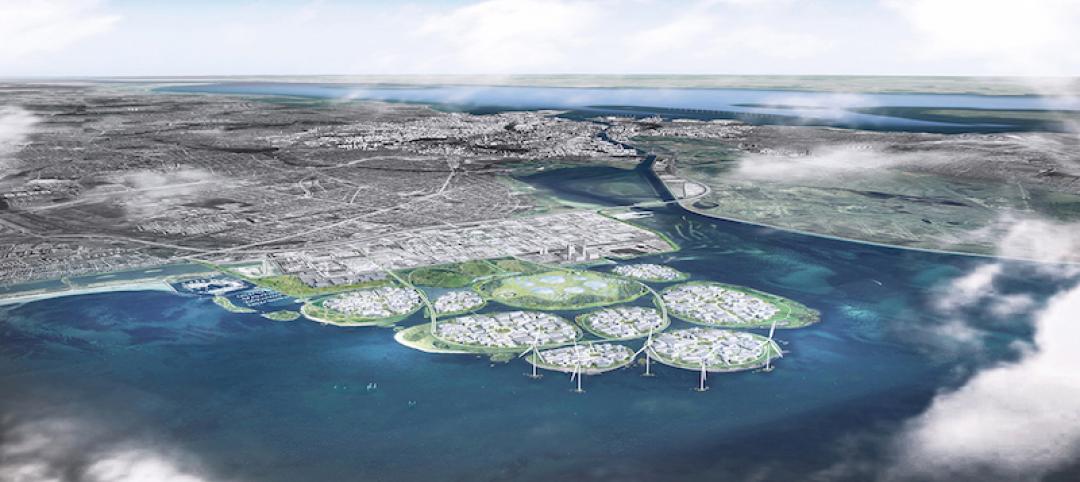AEC firms that have been pushing wellness for years say they finally have a receptive ear with developers and owners. “Developers sell this; they see it as an exciting new trend,” says Colin Rohlfing, AIA, LEED AP, Vice President and Director of Sustainability with HDR.
The advice about wellness these firms dispense to clients in many cases has already been road tested to make their own workplaces healthier.
New Orleans-based Eskew+Dumez+Ripple positions wellness to clients as “asset opportunities,” such as yoga rooms and classes, with the goal of keeping employees active, says Ian O’Cain, AIA, Associate and Project Architect. One of his firm’s recent projects is a new 30,200-sf, two-story office building in New Orleans that serves as the corporate headquarters for general contractor Palmisano Group. The $9 million building includes an in-house gym and yoga studio, green space, an active stairwell, and a racetrack layout that creates a circulation path for employees. The narrow floorplate (55 feet wide) lets in lots of light.
One of DPR Construction’s recent projects is a new office space in Charlotte, N.C., for Little Diversified Architectural Consultants. Chris Gorthy, a Project Executive with DPR, says that before embarking on this project, Little’s management toured several WELL-certified buildings, including DPR’s office in Reston, Va.
Little’s Charlotte office takes up 60,000 sf over 2½ floors of an existing building. Wellness certification accounted for about $8 per sf of its $150 per sf cost (including furniture), according to Little CEO Phil Kuttner, AIA, LEED AP, WELL AP. Its wellness features include a monumental staircase, access to drinkable water throughout, and ample natural lighting. Gorthy says the biggest challenge was upgrading the building’s air quality, which required educating the project’s subcontractors, setting up a temporary containment system, and figuring out how the air system could be cleaned.
Kuttner says the company assigned a team within its company to monitor the office’s air and water quality, conduct employee satisfaction and productivity surveys, and issue reports.
Last November, Clark Construction became the first GC in the U.S. to be a Fitwel Champion. As part of that agreement, Clark has identified seven of its offices—in Baltimore and Bethesda, Md.; Chicago; Irvine, San Diego, and San Francisco, Calif.; and Seattle—to achieve Fitwel certification.
“This is a way for our company to break through to our employees about its concern for their healthier living,” says Fernando Arias, Clark’s Director of Sustainability. He observes, too, that many of his firm’s clients “are in the same boat” and are looking for ways to provide healthier work environments to their employees.
Take, for example, a mixed-used project in Maryland that Carr Properties is developing known as The Wilson & The Elm, a 930,000-sf building with 360,000 sf of office space and 460 for-rent apartments. (The demolished building this replaces had been known as The Apex.) Arias says the genesis of this project was a meeting he had in early 2018 with the developer’s CEO Oliver Carr, which led to a presentation about wellness that Arias’ team made to Carr executives last April.
Carr Properties now has four projects registered with Fitwel, and The Wilson & The Elm is likely to be the second certified, following another Clark-built project: Midtown Center in Washington, D.C.
What prompted Carr Properties to move toward wellness, says its Senior Director of Development Jason Bockenek, was “a combination of our outlook as long-term owners of real estate, and increased demand driven by sophisticated tenants, catering to a younger workforce.”
Related Stories
Resiliency | Apr 22, 2019
Turner Construction doubles down on jobsite efficiency
The company targets a 50% cut in greenhouse gas emissions and water use from construction activities by 2030.
Sustainability | Apr 5, 2019
BIG unveils vision for a sustainable, floating city
The project is dubbed Oceanix City.
Sustainability | Mar 25, 2019
This is the world’s first Sustainable SITES Initiative v2 Platinum project
The building is part of the Phipps Conservatory and Botanical Gardens in Pittsburgh.
Sustainability | Feb 20, 2019
Studio NAB’s Superfarm project creates an entire ecosystem in an urban environment
The Superfarm will go beyond what vertical farms typically produce.
Market Data | Feb 4, 2019
U.S. Green Building Council announces annual Top 10 States for LEED Green Building in 2018
Illinois takes the top spot as USGBC defines the next generation of green building with LEED v4.1.
Sustainability | Feb 1, 2019
Designing a net zero aquatic center
Buildings can be designed to cut consumption and operate more efficiently, but the pools always make it difficult to achieve substantial savings.
Sustainability | Jan 30, 2019
Denmark to build nine industrial, energy-producing islands surrounded by a ‘nature belt’
The project will be located 10 km (6.2 miles) south of Copenhagen.
Green | Jan 28, 2019
This is the country’s greenest academic building
Perkins+Will designed the building.
Sustainability | Nov 5, 2018
How the built environment can help the climate crisis
Our buildings and cities will have to experiment with new climate responsive forms, and in many cases, the built environment will require dramatic shifts to achieve true resilience and continue working towards a carbon-neutral society.
Sustainability | Oct 25, 2018
As project delivery models evolve, designers rethink their role
New York City’s newest university campus, Cornell Tech, pushes the limits of sustainable and resilient design.

















